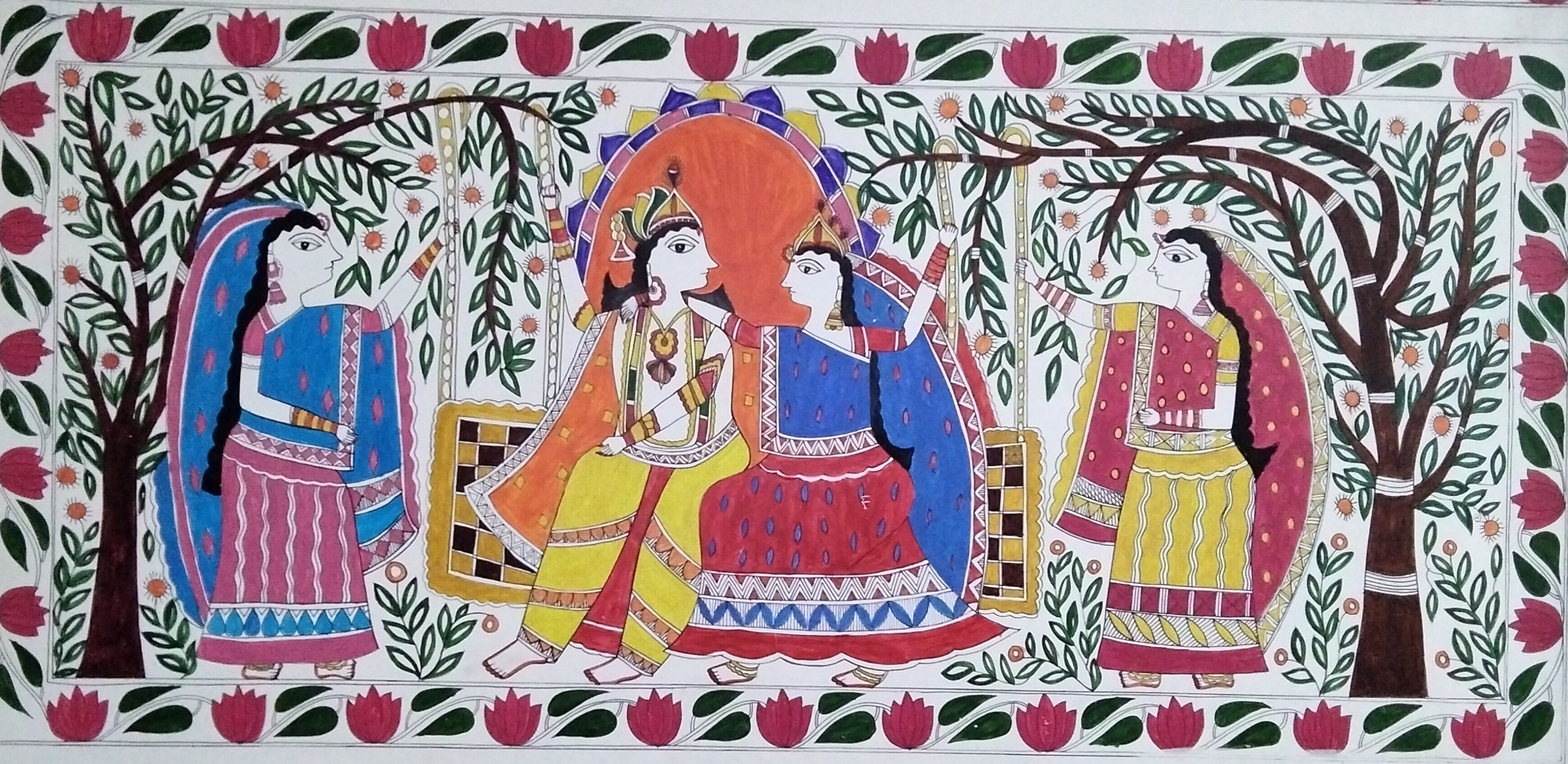Back to Blog
Art
12/25/2023
7 min read
Madhubani Art: Colors of Mithila
Dive deep into the traditional art form that has put Bihar on the global cultural map.
By Art Critic

Madhubani art, also known as Mithila painting, represents one of India's most vibrant and culturally significant art forms. Originating from the Mithila region of Bihar, this ancient practice has evolved from humble wall decorations to internationally acclaimed artwork.
## Origins and History
The tradition dates back over 2,500 years, with roots in the Ramayana period. Legend says that King Janaka commissioned artists to create paintings for his daughter Sita's wedding to Lord Rama. The art form was traditionally practiced by women of the region, passed down through generations as a sacred cultural practice.
## Distinctive Characteristics
Madhubani paintings are characterized by:
- **Natural Colors:** Made from turmeric, indigo, ochre, and other natural materials
- **Geometric Patterns:** Complex designs with mathematical precision
- **Religious Themes:** Depicting Hindu deities, mythological scenes, and nature
- **Bold Lines:** Strong outlines filled with vibrant colors
- **No Empty Spaces:** Every inch of the canvas is filled with patterns or colors
## Traditional Themes
**Religious Motifs:**
- Krishna and Radha's divine love
- Durga and other goddesses
- Ram and Sita's story
- Shiva and Parvati
**Nature Elements:**
- Lotus flowers symbolizing purity
- Fish representing fertility
- Birds as messengers of love
- Trees of life
## The Five Styles
1. **Bharni:** Filled with bright colors, practiced by Brahmin women
2. **Kachni:** Intricate line work, traditionally by Kayastha women
3. **Tantrik:** Geometric and abstract patterns
4. **Godna:** Tattoo-style designs
5. **Kohbar:** Wedding chamber decorations
## Modern Recognition
The art form gained international recognition when Sita Devi and other artists were discovered in the 1960s. Today, Madhubani paintings are:
- Recognized by UNESCO
- Featured in international museums
- Practiced by artists worldwide
- Used in contemporary fashion and design
## Economic Impact
Madhubani art has become a significant source of income for rural women in Bihar. Government initiatives and NGOs have helped artists:
- Access global markets
- Receive fair prices for their work
- Preserve traditional techniques
- Train new generations
## Learning the Art
Visitors to Bihar can learn Madhubani painting through:
- Village workshops in Madhubani district
- Cultural centers in Patna
- Online courses by master artists
- Art festivals and exhibitions
## Contemporary Adaptations
Modern artists are adapting Madhubani techniques to:
- Contemporary themes like environmental conservation
- Fashion and textile design
- Digital art and animation
- Interior decoration and murals
The art form continues to evolve while maintaining its traditional essence, proving that cultural heritage can thrive in the modern world while providing economic opportunities for its practitioners.
Tags
#art
#madhubani
#culture
#tradition
Never Miss a Story
Subscribe to our newsletter for the latest stories and updates from Bihar